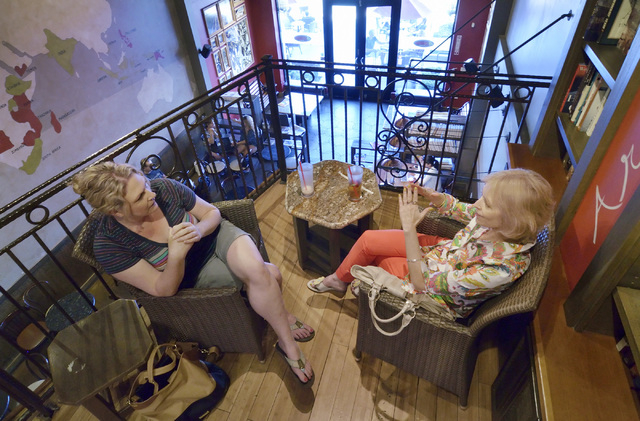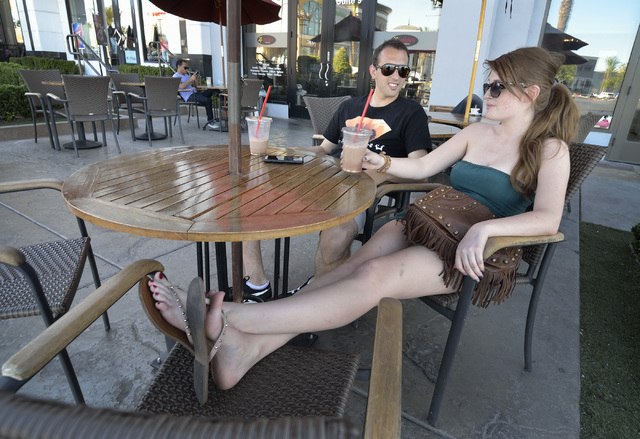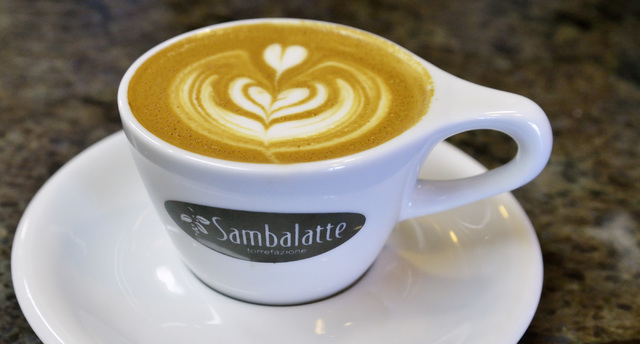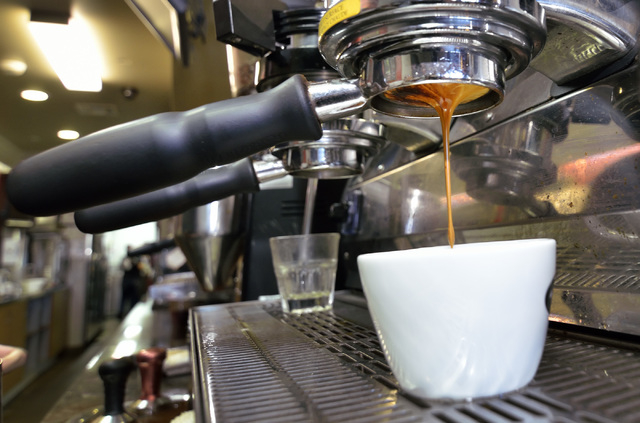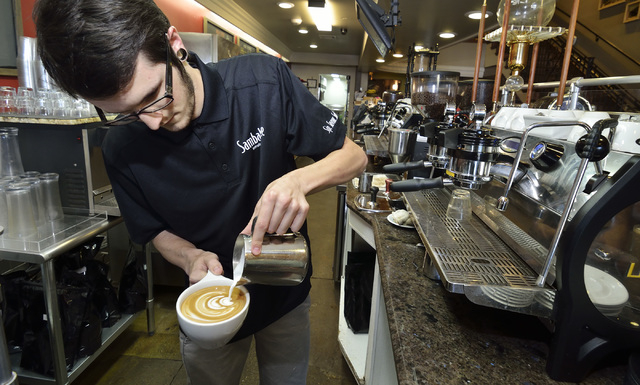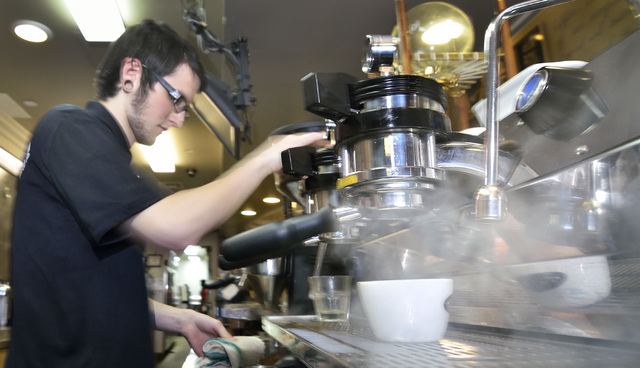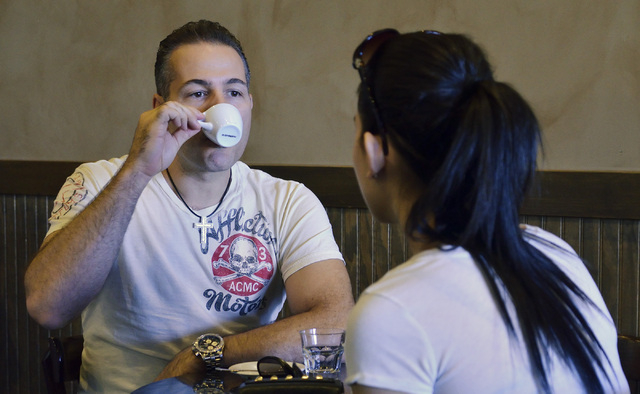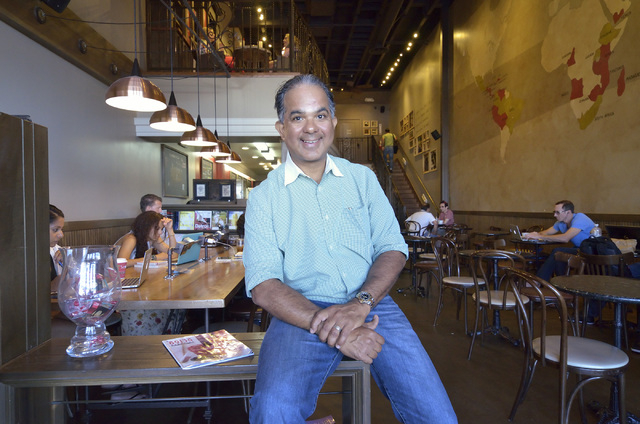Local coffee companies fend off price increases
Many crops grow in the hilly terrain of Brazil’s countryside, but there is one that is worth more than the rest, and its demand spans the globe.
It’s coffee.
Whether taken black, over ice or topped with whipped cream, coffee has become an inseparable part of most people’s daily lives. Enjoying the pleasure that this intoxicating drink offers does not come without a cost. And for many consumers, that cost been on the rise.
The world’s largest producer of coffee, Brazil experienced an intense drought that began in January and ended in March, and coffee prices skyrocketed to $2.19 a pound in June. Currently, prices have dropped about 40 to 50 cents from the high. Still roasters, retailers and some consumers are feeling the hit.
“It is one of the biggest droughts that has happened in Brazil this year,” said Luiz Oliveira owner of the local coffee retailer, Sambalatte.
But the effects it has had on the prices local coffee drinkers pay have varied.
For Don Anderson, owner of Colorado River Coffee Roasters in Boulder City, market fluctuations are a part of being in the industry. The roastery does both individual and wholesale sales.
“From Sept. 30, 2013 (low point in last year), to March 30, 2014 (high point in last year), the price increased from $1.05 to $2.05. That represents a 51 percent increase over that time,” said Anderson. “We are very transparent with our customers, and they know that what they pay is dependent on the source, they are savvy and understand the commodity world.”
The effect the price increase has on businesses depends on which type of coffee they use. At Grouchy Johns, Brazilian coffee beans represent only 5 percent of the establishment’s total market.
“We have seen an 8 percent increase in our Brazilian supply between June and July,” said J.J Wylie, co-owner of Grouchy Johns. “We have not had to raise our prices yet.”
For retailers like Sambalatte, which deal with gourmet coffee rather than commercial beans, the impact of price increases is very minimal and its customers will not be paying more at the register.
“In our case, we use specialty (gourmet) beans, and they are usually about $1.80 higher than the commercial grade,” said Oliveira. “The coffee we buy does not get affected very much because the price is already high.”
More than a month ago, Starbucks increased the price of some of its drinks by about 5 cents to 20 cents. The price of its packaged coffee sold in grocery stores rose by a dollar. The drinks that will not be seeing price increases are frapuccinos, grande latte and tall coffee, USA Today reported for a story on its website.
According to the January 2014 monthly coffee market report, the International Coffee Organization expected the size of the Brazilian harvest for the 2014-2015 season to be in between 46 million to 50 million bags. In the most recent monthly coffee market report, which was for June, the ICO stated that there still was not a consensus on how big the 2014 crop would be.
“As soon as the drought began, there was a lot of speculation about the effect it would have. Some were saying that there would be a shortage of 10 million bags (in Brazil), and immediately the price of coffee went up,” said Oliveira. “I was getting two or three emails a day in my inbox about it.”
The ICO estimates that about more than 142 million bags of coffee are consumed annually worldwide. This equals to about 584 billion cups — or more than 80 cups per year for every person in the world.
According to World Bank statistics, that makes it the most sought after commodity after crude oil.
Another issue that has caused coffee prices to increase is the coffee leaf fungus known as the rust in Central America, which has caused exports from the region to decline.
According to an April 2002 report by the Inter-American Development Bank, the largest source of development planning in Latin America, coffee prices were then at record lows, competition was intensifying and there was too much inventory.
“A lot of these farmers rely on coffee as their only income, and when prices get too low, they often have to take out loans,” said Oliveira. “When prices are competitive, it benefits the farmers, who can then invest more in their communities, which are often poor, by helping build important things such as schools.”
Anderson said the current price of coffee was at $1.79, which is an increase from where it was on July 11 at $1.60 per pound.
“We expect to see price fluctuations when dealing with commodities,” said Grouchy Johns owner Wylie.
Contact Review-Journal writer Paulina Rojas at projas@reviewjournal.com or 702 383-0206. Follow her on Twitter: @ PerpetuallyPau




